The remnants of Hurricane Ian earlier this month threatened to flood Old Town Alexandria, serving as a reminder of why the city is rushing to build an updated sewer system.
Work on a new sewer tunnel began last year, and Alexandria Sanitary Infrastructure Division Chief Erin Bevis-Carver said the project is scheduled for completion in 2025. The system will replace the original Combined Sewer System (CSS) with one that separates rainwater from contaminated sewage.
“Climate change has not helped Old Town. Every year it floods more. The threat from Hurricane Ian proved we needed this update,” Bevis-Carver said.
Project developer RiverReview says the updated system will prevent 140 million gallons of combined sewage from entering Old Town Alexandria’s waterways.
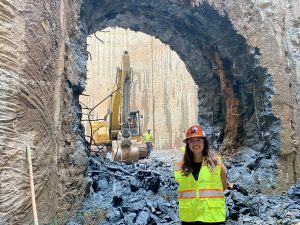
“It is a water quality project. What happens in an average year causes 140 million gallons of combined sewage to overflow into the Potomac River, Hunting Creek, and Holmes Run,” Caitlin Feehan, RiverRenew’s program director, said.
Alexandria’s City Council created AlexRenew, formerly Alexandria Sanitation Authority, to build, operate and maintain sewage treatment systems. RiverReview is a project partnership between the City of Alexandria and AlexRenew.
The Water Infrastructure Finance funds the project, and Innovation Act (WIFIA) loaned AlexRenew $307 million, half of the project’s total cost. Additional funding came from state grants, loans, and cash contributions from AlexRenew, according to the Environmental Protection Agency and RiverReview.
Although flooding in Alexandria will continue, when it floods, the updated system will capture rainwater and prevent sewage from entering waterways like the Potomac River, according to Bevis-Carver.
“These overflows happen every single time it rains; About a quarter inch of rain results in an overflow from these outfalls, containing bacteria, nitrogen, and phosphorus, which pollutes our waterways,” Justin Carl, program manager for Alexandria’s water treatment department, said. “When we are done, overflows will be less than 17 million gallons a year and goes from 70 to four events on average.”
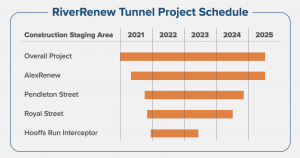
A similar large-scale project usually takes 10 to 15 years to complete. Viriginia in 2017 authorized the construction of a sewer system that did not pollute the Potomac River or other local waterways. And, it set a seven-year time limit to expedite the process and combat a growing national water management issue.
The mandate created a strict project deadline where AlexRenew prioritised scheduling, planning, material coordination, and “going from 0% design to an operational system in seven years,” Carl said. “We had to stack a lot of activities to make this doable.”
The wastewater process uses activated microbes that dissolve the waste and run through a tertiary process, filtering bacteria using ultraviolet light before the water reenters the waterways. The new tunnel stores water and transports the captured water to AlexRenew’s wastewater treatment facility, located within walking distance from Old Town Alexandria at 1800 Limerick St.
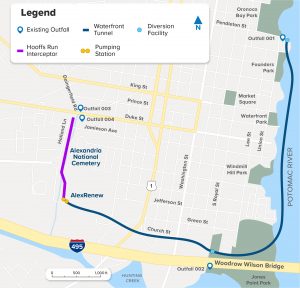
AlexRenew’s wastewater treatment facility operates 24 hours a day throughout the year to ensure water treatment expectations. The project aims to provide healthier, more beautiful waterways, a safer environment for wildlife, and new and improved public spaces by the waterfront, according to RiverReview.
“Right now, we have one of the most advanced wastewater treatment plants in the United States on one of the smallest footprints,” Carl said. “We are treating wastewater to near drinking water standards.”
Project planning and development began in 2017, during which AlexRenew faced pandemic-related shutdowns, material shortages, and Ukraine war-related equipment shortages. AlexRenew’s tunnel project, despite the challenges, kept on schedule to “beat” the July 1st, 2025 deadline, according to Carl.
“All along the way, we worked with really great partners that have been able to work with us and collaborate in order to achieve the scheduled date,” Feehan said.
AlexRenew took precautions to ensure the project left a minimal imprint on historic Old Town Alexandria and worked alongside the community to help preserve the city’s storied history.
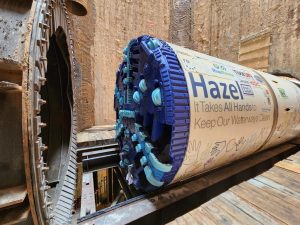
“Most of our project touches the most historic areas of Alexandria. We had to site these facilities in a historic setting,” Carl said. “We wanted the community to make sure they felt part of this project and remained continuous of the construction impacts they had to endure.”
“Flooding continues to be a problem in Old Town. It is a curiosity for the people who come down specifically to see the flooding,” Alexis VonSchoening, a clerk with The Old Town Shop clerk, said. “Business and accessibility depend on a lot of factors, whether the town closes off a road or we have to use sandbags. It’s a mixed bag, sometimes flooding happens, and sometimes it doesn’t. Hopefully, the new system can help alleviate some issues.”
Similar entities to AlexRenew are working on projects like the one in Old Town. Washington, D.C., built a combined sewer system in 2008 and recently expanded the system to the Anacostia to filter rain and sewer water away from waterways. Diversion of rainwater and sewage is not only a tristate initiative; 740 communities nationwide are working toward cleaner waterways through proper wastewater management, according to AlexRenew.
AlexRenew completed three proceeding projects in 2021 before beginning Alexandria’s tunnel project. “This project is unique because it is the largest infrastructure project in Alexandria’s history,” Feehan said. “AlexRenew does not expect to do any more tunnels after this.”

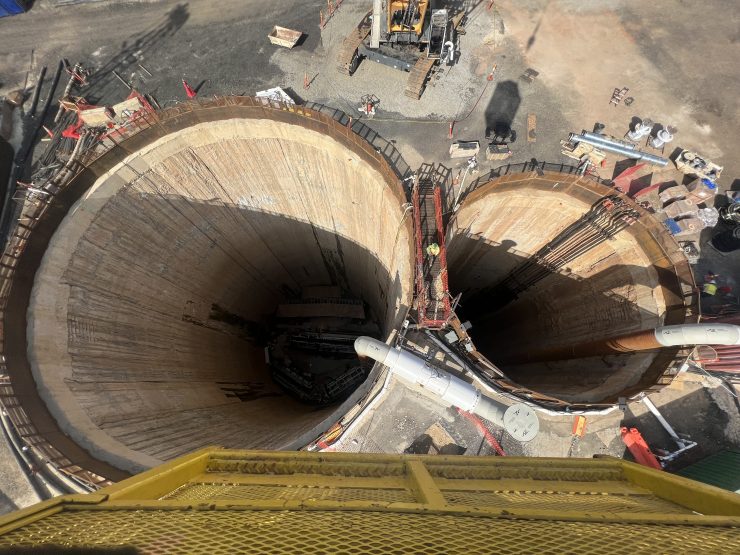
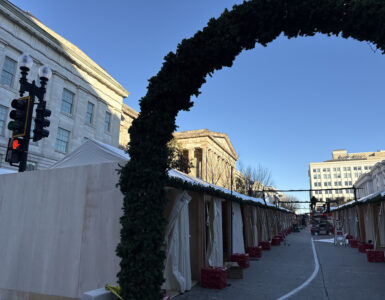
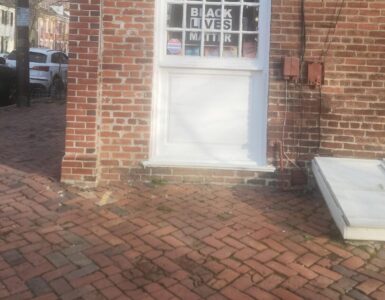
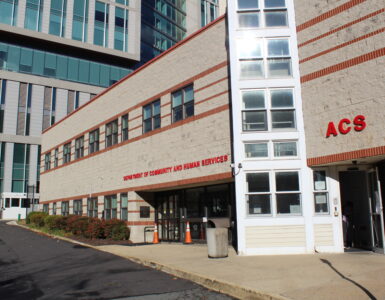










Add comment